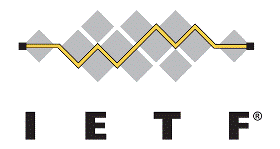Additional information is available at tools.ietf.org/wg/xmpp
Chair(s):
Real-time Applications and Infrastructure Area Area Director(s):
|
Meeting Slides:
Internet-Drafts:
Request for Comments:
| RFC | Status | Title |
|---|
| RFC3920 |
S |
Extensible Messaging and Presence Protocol (XMPP): Core |
| RFC3921 |
S |
Extensible Messaging and Presence Protocol (XMPP): Instant Messaging and Presence |
| RFC3922 |
S |
Mapping the Extensible Messaging and Presence Protocol (XMPP) to Common Presence and Instant Messaging (CPIM) |
| RFC3923 |
S |
End-to-End Object Encryption in the Extensible Messaging and Presence Protocol (XMPP) |
| RFC6120 |
PS |
Extensible Messaging and Presence Protocol (XMPP): Core |
| RFC6121 |
PS |
Extensible Messaging and Presence Protocol (XMPP): Instant Messaging and Presence |
| RFC6122 |
PS |
Extensible Messaging and Presence Protocol (XMPP): Address Format |
Charter:
The Extensible Messaging and Presence Protocol (XMPP) is an
technology for the near-real-time exchange of messages and presence
notifications, where data is exchanged over Extensible Markup Language
(XML) streams. The original XMPP working group published RFCs 3920-3923.
Implementation and deployment experience since that time has resulted
in errata, clarifications, and suggestions for improvement to the core
XMPP specifications (RFCs 3920 and 3921). Some technologies on which
XMPP depends (e.g., Transport Layer Security and the Simple
Authentication and Security Layer) have undergone modifications of their
own, which XMPP needs to track. Finally, the group needs to define a
sustainable solution to internationalization of XMPP addresses, since
the approach taken in RFC 3920 (based on stringprep profiles) is limited
to Unicode 3.2 characters. Both draft-saintandre-rfc3920bis-* and
draft-saintandre-rfc3921bis-* reflect community input so
far regarding these modifications, but the group needs to complete this
work, especially with regard to internationalization. Because of the
scope of changes involved, it is envisioned that these specifications
will be cycled at Proposed Standard.
Although RFC 3923 defines an end-to-end signing and encryption
technology for use by XMPP systems, to date it has not been implemented.
A goal of the group is to develop an implementable method for end-to-end
encryption, preferably based on well known and widely deployed security
technologies.
XMPP uses TLS for encryption and the Simple Authentication and Security
Layer (SASL) for authentication. In the case of a server-to-server
stream, XMPP is deployed using TLS and the SASL EXTERNAL mechanism,
where each peer presents an X.509 certificate. This model introduces
scaling challenges in multi-domain deployments because RFC 3920 requires
that a stream cannot be reused for more than one domain, thus
necessitating multiple TCP connections. The group will work to overcome
these challenges by defining an optional mechanism for using a single
connection with multiple identities. It is anticipated that most of the
work will consist of defining and providing requirements to the TLS and
SASL working groups.
Many of the core and extended features of XMPP have also been
implemented in technologies based on the Session Initiation Protocol
(SIP). To ensure interworking between XMPP systems and SIP systems, a
number of Internet-Drafts (draft-saintandre-sip-xmpp-*) have been
produced. The group will define a framework within which this work could
be completed.
In completing its work, the group will strive to retain backwards
compatibility with RFCs 3920 and 3921. However, changes that are not
backwards compatible might be accepted if the group determines that the
changes are required to meet the group's technical objectives and the
group clearly documents the reasons for making them.
Goals and Milestones:
|
03-2010
|
| Decide upon a direction for server-to-server connection reuse. |
|
08-2010
|
| Deliver rfc3920bis and rfc3921bis to the IESG. |
|
12-2010
|
| Decide upon a direction for end-to-end encryption. |
|
01-2011
|
| Define a framework for SIP-XMPP interworking. |
|
02-2011
|
| Define a solution for server-to-server connection reuse. |
|
08-2011
|
| Define a solution for end-to-end encryption. |



